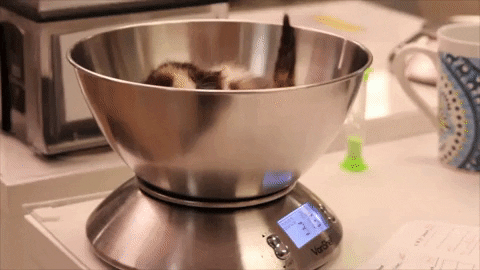Olympic Lifting Coaching | Meet Strategy
One of the big things we learned throughout the years is that having a plan is key. We will admit that we have been at big meets, have an idea floating around in the head, but it was really just a free-for-all. Maturing and getting older and studying other really great coaches, we started to figure out that having a game plan that minimizes stress for us, the coach, and the athletes allow our athletes do to really, really well. We have to have a step-by-step process of a game plan to go through.
1. What Are The Goals
Talk to the athlete about their own personal goals. Talk to the athlete about how the meet can be seen as a success. Coaches have to define what is success for the specific meet. Is it make all the lifts? Is it going for a specific PR? Is it going for a personal best total? Is it bringing home a bunch of medals? Whatever it is that will make the athlete happy and the coach happy (but most importantly the athlete) it is paramount to establish what the goals will be.
Sit down with the athlete and discuss the goals for the meet 16 weeks out. Go ahead and sit down and discuss the goals again 8 weeks out. Getting into the final block, 3 to 4 weeks out, review the goals again. Then when actually at the venue, visualize what the goals will be. Walk the athlete through the step-by-step process to help them see the goals are in reach. It will also help the coach to focus on the specific goals established between athlete and coach.
Establishing the goals early on, continuously hone in on the goals, and build a great relationship between the athlete and coach towards long-term success.
In addition, have two game plans established with prescribed attempts laid out. The warm-up will be almost the exact same but put in an audible position. Say the second to last warm-up attempt or the last attempt where the audible can be called. So, a certain number is hit, coach and athlete have two routes to go based on what happens during that audible warm-up attempt. Both game plans need to be practiced. This needs to happen for both lifts.
2. Know The Athlete’s Bodyweight
It is important to eliminate as many stressors as possible. It is important to understand where the athlete’s bodyweight is relative to their weight class. Now, super-heavyweights really don’t have to worry about this. They get to be fat and happy. Still, even with supers coaches need to tell them what they need to eat after weigh-ins, before competing, and what they will eat between the snatch and the clean and jerk.

Understanding the bodyweight principle is really important. Coaches need to know their athlete’s bodyweight. They need to know how much their athlete’s bodyweight drifts over the night. Coaches need to know how much weight the athlete gains throughout the day. They also need to comprehend what types of food impact the athlete. It is a big spectrum that needs to understood, studied, and the insights gained applied.
Typically when an athlete’s bodyweight drifts pretty much overnight, the athlete is probably in good shape. Their body is responding really well and recovering really well to specific factors. This is a positive.
3. Know The Athlete’s Diet & Nutrition
Understanding what types of foods the athlete is used to and how they respond to those foods. Coaches also need to know how the athlete competes and lifts with those specific foods.
Competing in a foreign country or traveling all around the USA, the athlete may not have access to the standard food the athlete is consuming. Coaches need to prepare for that. Coaches need to pack the necessary nutrition into the luggage and make sure all is okay. Or, when arriving somewhere new, head out to the grocery store and look for it.
Be warned, athletes with allergies or who don’t respond well to specific types of food and go somewhere and eat it will not feel good. This will compromise their performance on the platform. Coaches need to help athletes plan ahead. For instance, consider what will be being eaten a week out, four weeks out, and so forth. Athletes need to be eating the same stuff four weeks out, one week out, three days out, right up to the competition.
Athletes need to stick to what their body is used to. Make it normal and make it sensible.
Finally, have a game plan come competition time. What will the athlete eat the night before? The morning of? Just before weigh-ins or immediately following weigh-ins? How will they rehydrate? One hour out from their first attempt? What will they eat between the snatch and the clean and jerk? These are questions that need to go into the plan for optimal success.
4. Have Cues
Coaches need to have established means of cueing their athletes. A lot of coaches will sit there and randomly throw cues out that have no bearing on the past.
At Garage Strength, over the last four weeks, we might have a pull of four or five cues for each lift. Two weeks out it will be whittled down to two cues that are used over and over and over again. We might also throw in one random cue from the past that the athlete knows has worked. It is almost always going to be a directional cue or a feeling cue, like, “Knees back,” or, “Feel the heels push into the floor.”
Having the direction and feeling established is important. Establish the two main cues that can be utilized to familiarize the athlete with the scenario and situation that they are competing in. This is important! The cues need to be familiar. Traveling makes things unfamiliar, but the familiarity of all the little things, like cues and food, helps keep things more familiar.
5. Competition Game Plan

Have two game plans established with prescribed attempts laid out. The warm-up will be almost the exact same but put in an audible position to determine which of the two scenarios take place on the platform, determining how the athlete will roll. For instance, the second to last warm-up attempt or the last attempt is where the audible can be called between the athlete’s verbal feedback and what the coach sees. So, a certain number is hit, coach and athlete have two routes to go based on what happens during that audible warm-up attempt. Both game plans need to be practiced leading up to the competition. This needs to happen for both lifts.
This helps determine where to roll. It also helps establish where the cues will be when they need to be given in the game plan when to back off of the game plan so the athlete can focus on themselves, and there comes that point where the coach has to back off and just be supportive.
Recap
These schemes have to be practiced. These schemes have to be done in training. It all makes everything familiar, diminishes stress, and puts the barbell in the athlete’s hands to execute what they need to do. The coach is there to support, guide, and set the athlete into a position for success. Utilize these five tips as a coach and witness lifters hit new milestones in their athletic performance.
DANE MILLER
Dane Miller is the owner and founder of Garage Strength Sports Performance. He works with a select handful of clients on building comprehensive programs for fitness and nutrition. Several times a year he leads a workshop for coaches, trainers, and fitness enthusiasts.

